The Aliens of C.S. Lewis
Narnia and the Space Trilogy
Looking for psychological military science fiction? Read about the adventure of veteran Brendan Murphy as he tries to keep peace between Earth and a mysterious alien race known as the Sabia. Read the Fallen series today! Please remember to leave a review once you are done. Reviews are the lifeblood of independent creators.
C.S. Lewis’ Fictional Worlds of Aliens

C.S. Lewis is known for some of the most popular theological works of the Twentieth Century, though more people are aware of him because of his wonderful Chronicles of Narnia books. Those fantasy stories have enchanted children and made adults ponder the deeper cosmological meaning behind them. Additionally, he wrote an equally good science fiction series called the Space Trilogy. Something that may surprise those not familiar or only partially familiar with Lewis’ works is that both Narnia and the Space Trilogy deal with extraterrestrial life. One deals with aliens with a modern understanding, and the other handles life beyond Earth in a more classical way.
Narnia: The Plurality of Worlds
Reading The Magician’s Nephew (Book #1 in the Chronological Order, Book #6 in Publishing Order) establishes Narnia not as an alternative world, which most fantasy stories do with their fictional realms, but as another world in a dimension among many others, which includes our Earth.
First a Side Trip to the Plurality of Worlds Concept
This concept, known as the “Plurality of Worlds,” is an old idea dating back to the Ancient Greeks. While Plato (428–348 BC) and Aristotle (384–322 BC) believed in one universe as having more than on Earth would destroy the idea of a heliocentric universe and that having things orbit more than one thing would ruin a perfect universe, others known as Atomists believed that the universe was made out of an infinite amount of tiny “atoms” moving in an infinite amount of space. According to this view, these atoms could combine to form multiple worlds. The atomist Democritus (~460–370 BC) believed there were “innumerable worlds.”
The idea of a plurality of worlds was not favored by Church Fathers who considered the issue. Saint Augustine’s (AD 354–430) City of God and Confessions focused on the created order as a singular act of God, emphasizing the Earth as the stage for human salvation. The idea of multiple worlds wasn’t a significant concern, but Augustine implicitly aligned with a singular cosmos by rooting his theology in a unified divine purpose. Later on, Saint Thomas Aquinas (1225–1274) endorsed Aristotle’s arguments for a single world. In Summa Theologica, Aquinas argued that God likely did not create other worlds because a single world best reflected divine unity and order. Multiple worlds might suggest a lack of purpose or coherence in creation, which Aquinas saw as incompatible with God’s perfection.
Yet there was a pushback against this. Bishop Etienne Tempier’s Condemnation of Paris of 1277 broke Aristotelian ideas’ monopolistic hold on Christian philosophy. Tempier blasted those who thought Aristotelian physics put limits on God, such as not being able to make multiple worlds. Later, William of Ockham (1287-1347) and Jean Buridan (1300-1361) argued that God could have made other worlds if He wanted to, but there was no evidence for it in Scripture.
The Plurality of Worlds in Narnia and Their Inhabitants
In The Magician’s Nephew, Digory and Polly find a “Wood Between Worlds,” a forest with pools. Each pool is a connection to another world. The first world they go to is the World of Charn. The planet is described as dead, with a giant ruin of a city and a cool, red giant sun.
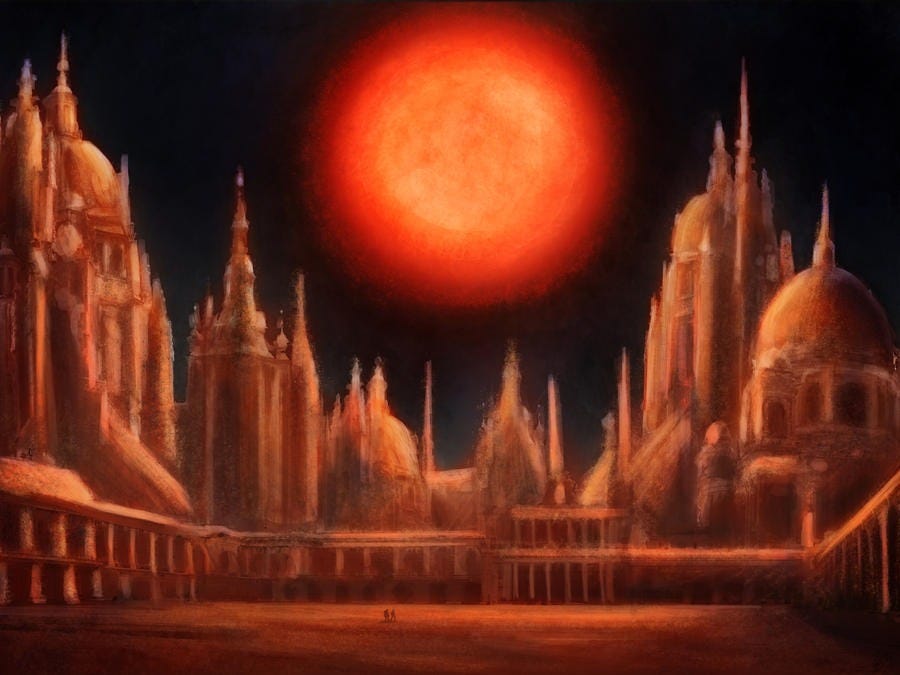
There, they find Jadis, who later becomes the White Witch. Jadis is described as seven feet tall, and in The Lion, the Witch, and Wardrobe, she is said to be a descendant of Lilith, part Jinn and part giant. Jadis can be considered a non-human alien. First, she is at least partly descended from Earth as the Lilith story comes from a Middle Ages Jewish myth. In the myth, Lilith was Adam’s first God-created wife (made from the same clay instead of Adam’s rib, which Eve was) who later rebelled against him. Jinn are an Islamic/Arabic concept of a spirit creature, while Lewis envisions giants being native to native to their own realms. Jadis is descended from previous rulers of Charn, implying she was born on that world.
Jadis uses Polly and Digory to escape from Charn after she realizes from their description of their sun that they come from a planet full of life. This shows her awareness of the idea of multiple worlds.
When the stories focus on Narnia, there are talking and non-thinking animals with counterparts on Earth, creatures with Earth-based mythological counterparts, and intelligent species of giants native to Narnia. All human characters in Narnia are either visitors or the descendants of various people who stumbled upon the world in some way.
Of note, all talking creatures have an equality about them. Mr. Tumnus the faun, Mr. Beaver the beaver, Bree the horse, Stonefoot and Wimbleweather the giants, and Reepicheep the mouse all know of Aslan (God the Son in Narnia) and are thought of as his intelligent creatures. Even Shift the Ape, who becomes a false prophet, is shown to have intelligence and spiritual awareness on par with any other talking creature. All creatures have the ability to go to Aslan’s Country (heaven) depending on their actions.
Earth, the world of Charn, Narnia, and other unnamed realms linked via the Wood Between Worlds form a Plurality of Worlds full of native and cross-world creatures. These creatures are aliens in the classical sense.
The Space Trilogy: Aliens in God’s Scientific Universe
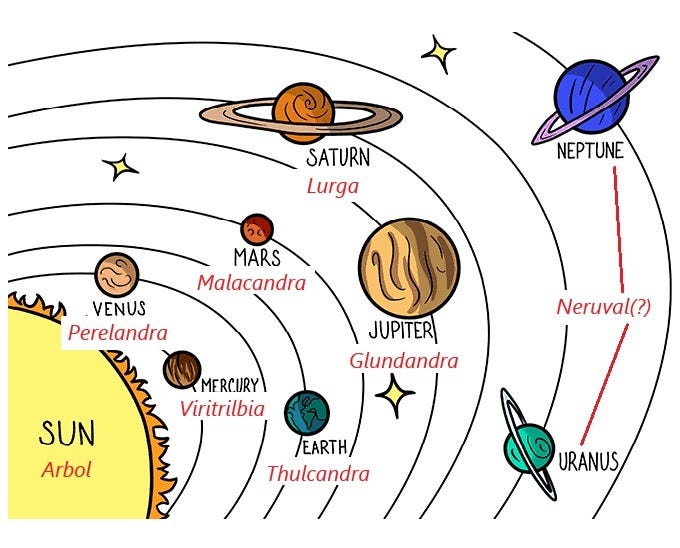
The Space Trilogy is formed by the books Out of Silent Planet, Perelandra, and That Hideous Strength. These stories feature a wide range of extraterrestrial creatures. The aliens fall into a hierarchy of spiritual development that reflects Lewis’ Christian understanding of the Cosmos.
The Eldila (Angels)
Not native to the solar system but coming from “deep heaven,” the Eldia are barely perceptible to humans. Through their powers, they can assume a physical appearance to better interact with humans. Eldia are given authority, the role of oyarsa, over planets to help guide creatures to God.
There are also Dark Eldila (Demons), aka Macrobes, in service of Earth’s oyarsa, who went rogue and is known as the Bent One. These Macrobes tend to live around Earth, though they hate the planet and humans. The Bent One damaged Mars’ atmosphere and later attempted to take over Venus, but the Eldila quarantined the Earth. The Eldila call Earth “Thulcandra,” which means “the Silent Planet” because the Macrobes are not allowed to commune with the normal Eldila.
The Hnau: The “Humans” of the Solar System
Aristotle defined humans as “rational animals.” Saint Thomas Aquinas embraced this view, expanding on how humans have a rational soul capable of knowing universal abstract concepts and free will, which reflects their immaterial nature. The Space Trilogy has different species of “rational animals” called hnau. These species are mortal, have rational thought, and are aware of God.
While all hnau have free will, only Earth’s humans have used it to sin. Mars’ different hnau find the very concept of going against God’s will repulsive.
Earth’s Hmana. The hmana are humans like you and I. Because of our fallen nature, hmana can do grave evil and even be possessed by Macrobes.
Mars’ Hrossa. The hrossa are tall, thin, beaver-like creatures living along Mars’s waters (Malacandra). They are known for their singing, dancing, and poetry.
Mars’ Seroni. A giant race of fifteen-feet-high, thin giants with humanoid but not hmana looks. They live in the mountains, with air too thin for other hnau to breathe. They are more philosophical in their thoughts than the other Martian hnau.
Mars’ Pfifltriggi. The pfifltriggi are a weird mix of a hmana-like body, frog-like structure, and tapir head. They are miners and machine engineers.
Venus’ Torlindri. The second book deals with the hmana protagonist’s encounter with the “Adam and Eve” of Venus (Perelandra), their children, and grandchildren. The Torlindri have all green, hmana-like giant bodies. The main character battles against a Macrobe-possessed human over the fate of the Torlindri. Thanks to the hero, the Torlindri avoid falling into a state of sin like the hmana.
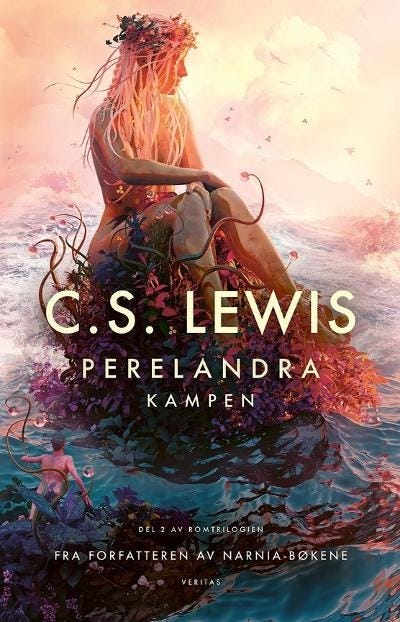
Other Somewhat Intelligent Aliens
Not only do other planets have wild animals, but there are indications that creatures on the evolutionary path to hnau-status exist. Then, there is a really odd outlier.
Great earth crawlers: These giant beetle-like creatures live underground on Venus. In one scene, the main character sees them pulling what may be a pagan idol. The main character wonders what they can comprehend of the divine and if they are on their way to being hnau, if not hnau already.
Submen: The submen are the mermaids of Venus. The main character thinks they may be the species that the Torlindri come from because of the shared green skin and webbing of fingers. Though they do not have advanced thinking, they seem curious about the first hman they see.
The Great Race: Little is known about the Moon’s “Great Race,” and what we do know in the story comes indirectly from a Macrobe. The Great Race are microscopic creatures that used technology and their unique biology to retain their intelligence after organic death. The evil human characters view the Great Race as a model for their own transhumanist goals. It is unclear if they are hnau, something completely different, or a merely a Macrobe lie.
Aliens in God’s Dominions
The aliens of Narnia and The Space Trilogy offer unique takes on how extraterrestrials and Christianity would mix. In Narnia, there is a second God-sacrifice and resurrection that destroys evil’s grip on the world, which was accidentally introduced by two characters in The Magician’s Nephew. The faith of Narnians is much like C.S. Lewis’ “Mere Christianity,” which focuses on faith, works, and grace. Meanwhile, the faith of the hnau not on Earth shows a religion that can interact directly with their angels, not needing a savior in the sense fallen Earth needed one. If aliens exist, and that’s a big if, who knows where they would fit in their relationship with God, but at least C.S. Lewis presented some unique ideas to consider.
Other Independent Book Promotions
Rhubarb Queen by Kevin P Hallett - Free Short Story
It had been twenty years since the Others last stole a teenage girl. But now Selma Dragon’s granddaughter, Lisa, was gone, leaving behind the telltale signs of a Taking.
She remembered when they took her daughter sixty years ago. She had sworn it would never again happen to her family, so she prepared to return to the mysterious cave she’d discovered, where the Others lived. Only this time, she was ready to sacrifice her life to rescue her precious Lisa.
Can she keep her sixty-year-old promise, NEVER AGAIN?
The Leathery Touch of His Grasping Appendage by ZZ Adams - Short Story for 99 cents
When Kouji moved into his new Tokyo apartment everything was perfect, he even adopts the tiny octopus that had been left by the previous occupant.
But when his girlfriend’s infatuation with the creature turns into obsession and a series of visitors from a mysterious cult appear and bring him gifts of fish, he knows for sure something is wrong.
The Leathery Touch of His Grasping Appendage is a humorous dark fantasy short about relationships, octopodes, unknowable creatures from the deep cosmos, and a tortoise.
Three Wishes by Echo Sable - Free Sample of a Book
An ancient legend. A supernatural entity. A choice that changes everything.
Step into the gripping world of Three Wishes: A Journey of Self-Discovery and Untold Desires, where a single encounter with the Monkey God could reveal your deepest truths—or your darkest fate.
Sign up now to get an exclusive sample and begin the journey today.
Roberto and the Seven Women by Bruno Martins Soares - Free Zombie Post-Apocalypse Book
Roberto has done the unthinkable while on mission, and now JJ ‘King’ Berger has to let everybody know there are some lines Shadow Team does not cross. There are people to save and bonds of trust to be held. And those seven isolated women in the wild deserve their respect and protection.
This is a story about duty and honor, a portrait of Shadow Team and its leader, before they meet Laura and the hope she brings back into the world in the 2-volume series LAURA AND THE SHADOW KING.
In a devastated world, Spec Ops Lieutenant JJ Berger is out of faith. Until he finds a little girl that can change it all.
Since the spread of the pandemic and the retreat of organized society to isolated locations, JJ has seen it all. The leader of the Special Ops Shadow Team, he’s been in charge of connecting with the desperate pockets of healthy population in Spain and Portugal. And he no longer believes in a happy ending.
But when little Laura escapes her cruel captors, JJ becomes the only one between the girl and certain captivity. This unlikely pair becomes dependent on each other, and in the process he learns something new: that he who controls hope, controls the world.
With zombie-like sick people and dangerous gangs on one side and ruthless Russian invaders on the other, are JJ and his team strong and skillful enough to face the overwhelming odds? And why is everyone so keen on capturing this six-year-old girl?
If you like gritty zombie post-apocalyptic military action, you’ll like this roller-coaster thriller by award-winning author Bruno Martins Soares, set in fascinating distinct settings from the Portuguese Atlantic Islands, to devastated Lisbon, to the medieval-like plains of western Spain.
In the Hands of Healers by Katie Fitzgerald - Free Fantasy Book
In the country of Cyridan, where magic pulses in the air, the kingdom's fate rests in the hands of Calabre, their most powerful healer. Despite her formidable skills, Calabre battles her own stubbornness and social ineptitude while serving as Royal Healer to the Queen. Her greatest challenge arises when a deadly illness, The Sweats, ravages the nobility. Reluctantly partnering with her colleague, Calabre embarks on a quest to uncover whether this affliction is a natural epidemic or a sinister plot.
As the death toll rises and time runs out, Calabre confronts external threats and her inner demons. Each step closer to the truth reveals blurred lines between ally and adversary, and she discovers that the greatest magic might lie in friendship and trust. In this spellbinding fusion of fantasy and mystery, join Calabre on a journey of self-discovery, redemption, and hope as the kingdom's future teeters on the edge and salvation depends on her modesty, if she has any.
Becca Princess of Sona by Luna Fox and F. Lowberry - Free Short Fantasy Story
Eighteen-year-old Becca is a regular kid. At least on the outside. Everything is fine until she dials 9-1-1 after waking up from a terrifying vision of the future. The cops come banging at her door at midnight, but she can't open or leave the house. There's a man in her room with a strange blade, staring at her with his red eyes.
Until Next Time
Next time will feature The Wick in the Wind short story. Then, we’ll have a podcast episode review of Edison’s Conquest of Mars.
As always, please leave a comment with any questions, reviews, thoughts, whatever about Fallen, Risen, Dormition, An Odd Pilgrimage, The Savannah Paranormal Detective Agency or whatever else I have discussed. I promise to reply!

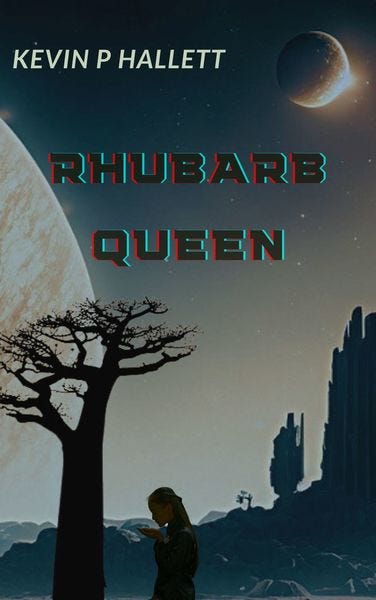
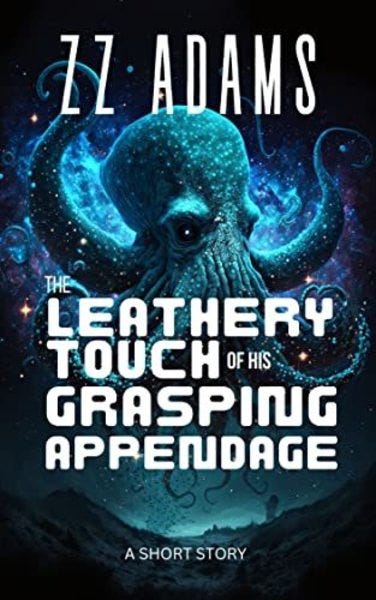
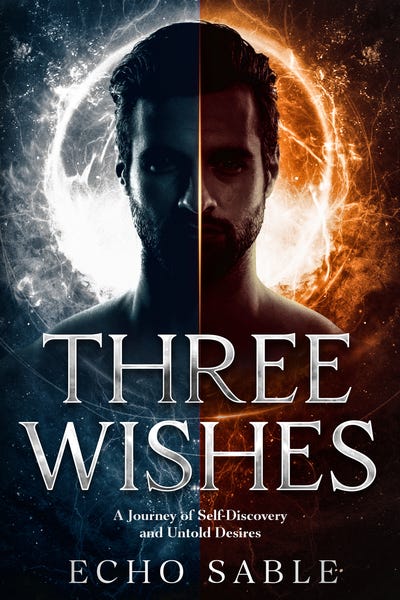
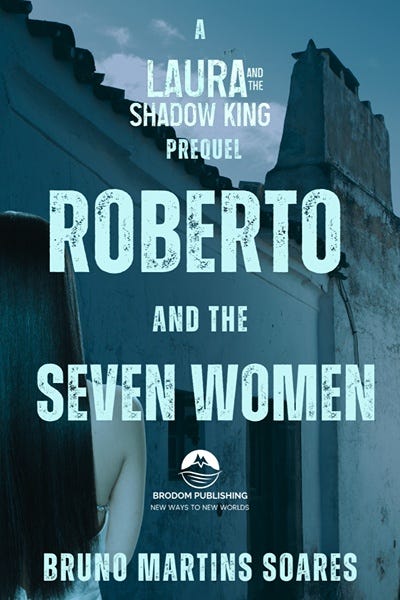
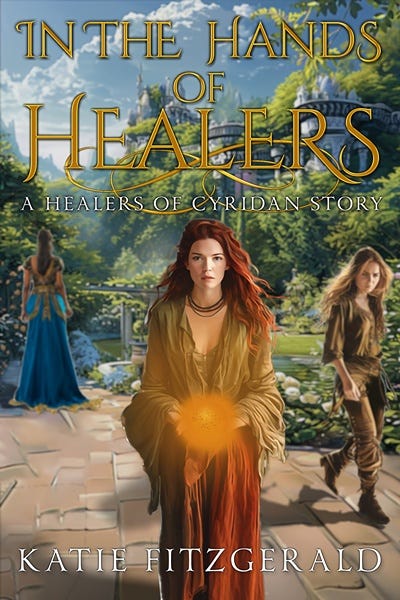
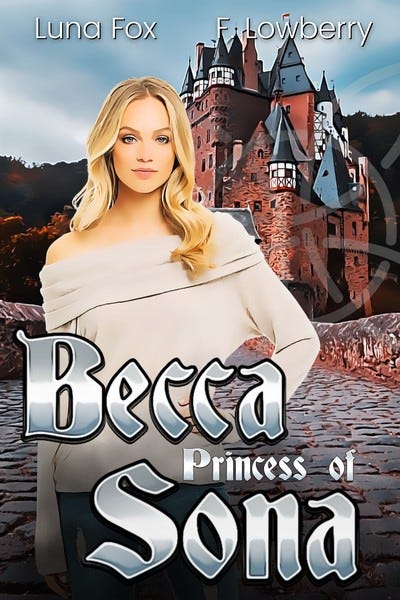
Patrick- It’s been too long since the world looks at this topic deeply. Glad you put together this highlight. Really interesting!
Wow, I never knew most of this about Lewis.. Thank you for sharing ♥️